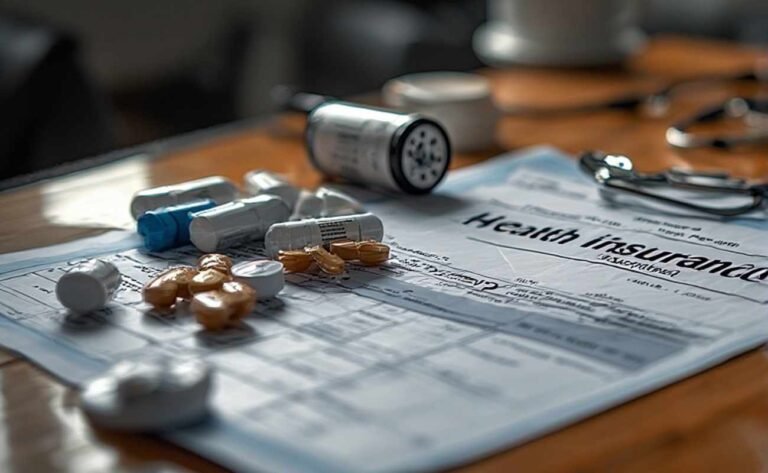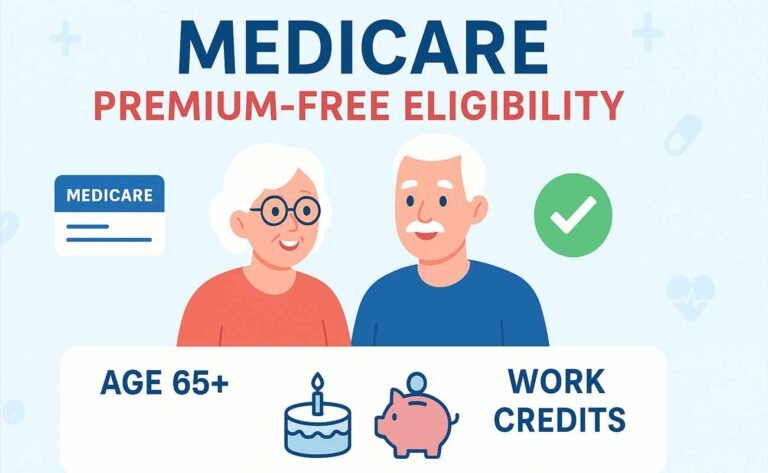New $2,000 Cap on Prescription Drug Costs in Medicare Advantage Plans for 2025
The $2,000 cap on prescription drug costs in Medicare Advantage plans is a transformative policy introduced under the Inflation Reduction Act to alleviate the financial burden of medications for seniors and disabled individuals enrolled in Medicare. Starting in 2025, this cap limits out-of-pocket prescription drug expenses to $2,000 annually, offering significant relief to millions of beneficiaries who rely on costly medications for chronic conditions like diabetes, heart disease, or cancer. This guide provides an in-depth look at how this policy works, who qualifies, and what it means for your healthcare budget, with detailed lists and tables to ensure clarity and actionable insights.
This policy, effective January 1, 2025, applies to Medicare Advantage (Part C) plans and Medicare Part D prescription drug plans, covering both brand-name and generic drugs. By capping out-of-pocket costs, it ensures beneficiaries no longer face unpredictable expenses, making healthcare more affordable and accessible. Below, we break down the policy’s key components, eligibility criteria, and practical tips to maximize savings.
Understanding the $2,000 Prescription Drug Cost Cap
The $2,000 cap on prescription drug costs is a game-changer for Medicare beneficiaries. Previously, high out-of-pocket expenses could spiral, especially for those requiring specialty medications. This section explores the policy’s core elements, ensuring you grasp its scope and benefits.
Key Features of the $2,000 Cap
- Annual Limit: Out-of-pocket prescription drug costs are capped at $2,000 per year for covered medications.
- Covered Plans: Applies to Medicare Advantage plans with prescription drug coverage (MA-PD) and standalone Medicare Part D plans.
- Eligible Expenses: Includes copays, coinsurance, and deductibles for prescription drugs covered by your plan.
- Effective Date: Begins January 1, 2025, resetting annually.
- No Coverage Gap: Eliminates the Medicare Part D “donut hole,” simplifying cost-sharing.
Why This Matters
For many seniors, prescription drug costs can consume a significant portion of their fixed income. I recall my aunt struggling to afford her heart medication, often skipping doses to stretch her budget. Policies like this cap can prevent such heartbreaking choices, ensuring access to life-saving drugs without financial strain. According to the Kaiser Family Foundation, nearly 1 in 4 Medicare beneficiaries spent over $2,000 on prescriptions in 2020, highlighting the need for this reform.
Who Qualifies for the $2,000 Prescription Drug Cost Cap?
Eligibility is straightforward but varies slightly depending on your Medicare plan. Here’s a detailed breakdown to help you determine if you qualify.
Eligibility Criteria
- Enrollment: Must be enrolled in a Medicare Advantage plan with prescription drug coverage or a standalone Medicare Part D plan.
- Covered Medications: Only drugs covered by your plan’s formulary count toward the $2,000 cap.
- Residency: Available to Medicare beneficiaries in the United States, including territories.
- No Income Restrictions: Unlike some assistance programs, this cap applies regardless of income.
Who Doesn’t Qualify?
- Beneficiaries with Original Medicare without Part D.
- Those using non-covered medications (e.g., drugs excluded from your plan’s formulary).
- Individuals with private insurance not tied to Medicare.
To learn more about Medicare plan options, check out our guide on Medicare Part A, B, C, and D Benefits for Seniors.
How the $2,000 Cap Works in Practice
Understanding how the cap is applied can help you plan your healthcare budget. Here’s a step-by-step look at the process, complete with a table for clarity.
Step-by-Step Process
- Track Out-of-Pocket Costs: Your plan tracks copays, coinsurance, and deductibles for covered prescriptions.
- Reach the Cap: Once your out-of-pocket spending hits $2,000 in a calendar year, the cap kicks in.
- No Further Costs: After reaching $2,000, your plan covers 100% of covered prescription costs for the rest of the year.
- Annual Reset: The cap resets on January 1 of the following year.
| Stage | Out-of-Pocket Cost | Plan Coverage |
|---|---|---|
| Initial Coverage | Copays/Coinsurance | You pay until reaching $2,000 |
| Cap Reached | $2,000 | Plan covers 100% of covered drugs |
| Post-Cap (Rest of Year) | $0 | No additional out-of-pocket costs |
Example Scenario
Imagine you’re prescribed a specialty drug costing $500 per month with a $100 copay. By July, you’ve spent $1,400 out-of-pocket. In August, you hit the $2,000 cap after spending $600 more. For the rest of 2025, your plan covers the drug fully, saving you $4,000 over the remaining months.
Benefits of the $2,000 Prescription Drug Cost Cap
This policy offers multiple advantages, particularly for those with high medication needs. Below is a list of key benefits.
Top Benefits for Beneficiaries
- Financial Predictability: Caps annual drug costs, making budgeting easier.
- Access to Medications: Encourages adherence to prescribed treatments without skipping doses.
- Eliminates Donut Hole: Removes the coverage gap in Part D, reducing mid-year cost spikes.
- Broad Coverage: Applies to both brand-name and generic drugs, ensuring flexibility.
- Supports Chronic Conditions: Benefits those with ongoing needs, like diabetes or cancer.
For additional financial relief options, explore Affordable Care Act (ACA) Subsidies, which can complement Medicare savings.
Medications Covered Under the Cap
Not all drugs qualify for the $2,000 cap. Understanding your plan’s formulary is critical to maximizing benefits.
Types of Covered Medications
- Generic Drugs: Lower-cost alternatives, often fully covered.
- Brand-Name Drugs: Higher-cost medications included in your plan’s formulary.
- Specialty Drugs: High-cost drugs for conditions like cancer or rheumatoid arthritis.
- Maintenance Medications: Drugs for chronic conditions like hypertension or diabetes.
Excluded Medications
- Over-the-counter drugs (unless prescribed and covered).
- Medications not on your plan’s formulary.
- Experimental or non-FDA-approved drugs.
| Drug Category | Covered? | Examples |
|---|---|---|
| Generic Drugs | Yes | Metformin, Lisinopril |
| Brand-Name Drugs | Yes | Eliquis, Humira |
| Specialty Drugs | Yes | Keytruda, Revlimid |
| Over-the-Counter Drugs | No | Aspirin, Ibuprofen (unless prescribed) |
How to Maximize Savings with the $2,000 Cap
Taking full advantage of this policy requires strategic planning. Here are actionable tips to optimize your savings.
Practical Tips for Beneficiaries
- Review Your Plan’s Formulary: Ensure your medications are covered to count toward the cap.
- Compare Plans Annually: During Open Enrollment (October 15–December 7), evaluate Medicare Advantage or Part D plans for better drug coverage.
- Use Preferred Pharmacies: Many plans offer lower copays at in-network pharmacies.
- Ask About Generics: Switching to generics can lower costs before reaching the cap.
- Track Spending: Monitor out-of-pocket expenses to anticipate when you’ll hit the $2,000 limit.
For more on managing healthcare costs, the Centers for Medicare & Medicaid Services (CMS) offers resources on plan comparisons.
Impact on Medicare Advantage Plans
The $2,000 cap reshapes how Medicare Advantage plans structure their drug benefits. Here’s how it affects plan providers and beneficiaries.
Changes for Plans
- Cost Redistribution: Plans may adjust premiums or copays to account for covering costs post-cap.
- Enhanced Benefits: Some plans may offer additional perks, like lower copays, to attract enrollees.
- Formulary Adjustments: Plans might expand formularies to include more high-cost drugs.
Beneficiary Considerations
- Premium Increases: Some plans may raise premiums to offset the cap’s costs.
- Plan Stability: Ensure your plan remains financially viable to avoid disruptions.
- Network Restrictions: Verify that your preferred pharmacies and providers are in-network.
| Plan Aspect | Potential Change | Beneficiary Impact |
|---|---|---|
| Premiums | May increase slightly | Higher monthly costs |
| Formulary | Expanded drug coverage | More medication options |
| Pharmacy Network | Possible restrictions | Need to verify in-network pharmacies |
Common Questions About the $2,000 Cap
Beneficiaries often have questions about how this policy applies. Below, we address the most common queries in a clear, concise format.
Frequently Asked Questions
- Does the cap apply to all medications?
Only medications covered by your plan’s formulary count toward the $2,000 limit. - What happens if I switch plans mid-year?
Out-of-pocket costs don’t transfer between plans; you start over with the new plan. - Are premiums included in the cap?
No, only copays, coinsurance, and deductibles for covered drugs count. - Can I combine this with other assistance programs?
Yes, programs like Extra Help can lower costs before reaching the cap. - Does the cap apply to Medicare Supplement plans?
No, it’s specific to Medicare Advantage and Part D plans.
For more on related financial support, visit AARP’s Medicare Resources.
Comparing the $2,000 Cap to Other Medicare Reforms
The $2,000 cap is one of several recent Medicare reforms. Here’s how it stacks up against other changes.
Comparison Table
| Reform | Key Feature | Beneficiary Impact |
|---|---|---|
| $2,000 Drug Cost Cap | Limits out-of-pocket drug costs to $2,000 | Predictable drug expenses |
| Insulin Cost Cap ($35/month) | Caps insulin copays at $35 per month | Affordable insulin for diabetics |
| Part D Premium Stabilization | Limits Part D premium increases | Stable plan costs |
| Catastrophic Coverage Improvement | Eliminates 5% coinsurance after $7,400 | Reduced costs for high spenders |
Potential Challenges and Limitations
While the $2,000 cap is a significant step forward, it’s not without challenges. Here’s what to watch for.
Key Challenges
- Formulary Restrictions: Some plans may limit coverage for high-cost drugs to manage expenses.
- Premium Increases: Plans may raise premiums to offset the cap’s financial impact.
- Awareness Gaps: Beneficiaries may not know about the cap or how to track spending.
- Non-Covered Drugs: Medications not on your plan’s formulary don’t count toward the cap.
How to Address Challenges
- Stay Informed: Review plan documents and updates from CMS.
- Consult SHIP: Contact your State Health Insurance Assistance Program for personalized guidance.
- Monitor Costs: Use your plan’s online portal to track out-of-pocket spending.
Future Implications for Medicare Beneficiaries
The $2,000 cap sets a precedent for further healthcare reforms. As drug costs continue to rise, this policy could pave the way for broader cost-sharing limits or expanded coverage. Beneficiaries should stay proactive, reviewing plans annually and advocating for their needs. My neighbor, a retiree on a fixed income, shared how this cap gives her peace of mind, knowing her cancer medications won’t bankrupt her. Stories like hers underscore the policy’s real-world impact.
Conclusion
The $2,000 cap on prescription drug costs in Medicare Advantage plans is a landmark reform that promises financial relief for millions of seniors and disabled individuals. By capping out-of-pocket expenses, eliminating the donut hole, and simplifying cost-sharing, it makes medications more accessible. Use the tips, tables, and resources in this guide to navigate the policy, compare plans, and maximize savings. Stay informed, plan strategically, and take control of your healthcare budget in 2025 and beyond.






